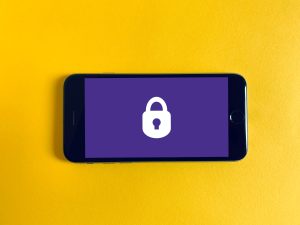The smartphone is a tiny hand-held device that has transformed the world. Now, you have a portable communication and computing device at your fingertips. Besides, it is also the central hub for the watch, calculator, compass, home keys, camera, and office apps. With all these integrated functions, it is no surprise that smartphones store sensitive personal information.
Unfortunately, the rise of smartphone usage comes with increased cybercrime targeting these devices. A recent statistical report unveils that this year, over 4.5 billion records have been breached on mobile devices alone.
That explains why smartphone security is of utmost importance. You want to ensure your device has a secure environment – like your home. With these five essential common sense tips, you can enhance smartphone security.
1. Protect Your iPhone from Physical Damage
A ruined smartphone can be catastrophic. What if you stored your encrypted files, private keys, and passwords on the device? That could spell a disaster if it falls and breaks the screen, or worse, the motherboard. While nobody can steal information from a broken iPhone, the device is practically useless.
You could not use it again to lock your garage door, make a phone call, or check your bank statement. That makes physical protection the first line of defense for smartphone security.
A phone case covers the most vulnerable parts of an iPhone. It protects from scratches, accidental drops, and shatters. In extreme temperatures, the material may also prevent heat transfer from components to the user’s hand. The market presents various types of phone cases. A water-resistant bag protects against water damage, while the armband case from iKase holds the iPhone firmly on your arm when exercising.
Also, look into screen protectors. These prevent scratches and cracks on the screen. You can choose tempered glass screen protectors, which offer extra protection – absorbing force from falls better than plastic. However, only buy genuine products and carefully follow the application instructions.
2. Keep Your Smartphone Locked

Phone protection begins with access. Thieves cannot gain entry to a locked device. They need to provide your authentication credentials or biometric data. The passcode remains the most common authentication method. Use an alphanumeric code to prevent brute-force attacks – the most popular 1234 or ABCD codes make your phone susceptible to unauthorized access.
On iPhones, you can choose Touch ID or Face ID as more convenient unlocking options. Android presents you with a customizable pattern or PIN code. Fingerprint scanners, face detection, and iris scanners are prevalent in premium smartphones. These ensure only the person allowed to access the device can unlock it.
3. Clean Your System
Malware, bloatware, and junk files can make your device vulnerable. For instance, budget Android phones come with bloatware that runs in the background, consuming resources. These apps may contain malicious code that steals information or displays ads.
Third-party apps, like games, may also contain malware. You can avoid these by following best practices like downloading only from trusted sources, reading reviews, and checking the app’s permissions. A flashlight app may require access to your camera to activate the light. But why would a calculator app ask to access your contacts or gallery?
Your network, computers, and cloud storage synchronize data with your smartphone. The Internet of Things (IoT) devices connected to your mobile phone also present a possible point of attack. A malware-infected device can spread the virus through these channels, compromising all your internet-connected devices.
Ensure you scan your system regularly for malware and clean out unused apps.
4. Avoid Unknown Public Networks
You are on your way home when suddenly your phone prompts you to connect to an open network. No passwords, free internet. You link to download some movies, pay for your last-minute order, and then check your bank account. That was a bad idea.
While convenient, public networks are insecure. Hackers run such networks to bait unsuspecting users into connecting. Once connected, they can monitor your traffic and steal sensitive information like passwords, credit card numbers, and addresses. Avoid such networks or use VPNs to encrypt communications.
5. Update Regularly
Smartphone manufacturers work tirelessly to ensure the security of your device. They patch vulnerabilities, remove bugs, and introduce new features with each update. You will receive OS updates for your device – iOS and Android. Do not ignore these updates. They bring security fixes, so keep your system up-to-date.
You may also receive app updates from developers regularly. Again, these updates fix bugs and patch security vulnerabilities in the apps. Keep them updated to maintain a secure smartphone environment.
For instance, some apps may introduce E2E with an update, making your communication safe. Never run Android games that got updated more than a year ago. They could contain security threats.
In Conclusion
Security is a critical aspect of smartphone usage. You store lots of sensitive data on your device, and maximum protection from cybercriminals and other malicious entities is paramount. These five essential tips help maintain a secure environment for your gadget.
A reliable phone case, locked device, clean system, cautious internet usage, and regular updates can ensure your smartphone remains secure. Follow these tips to keep yours safe from unauthorized access and cyber-attacks.












